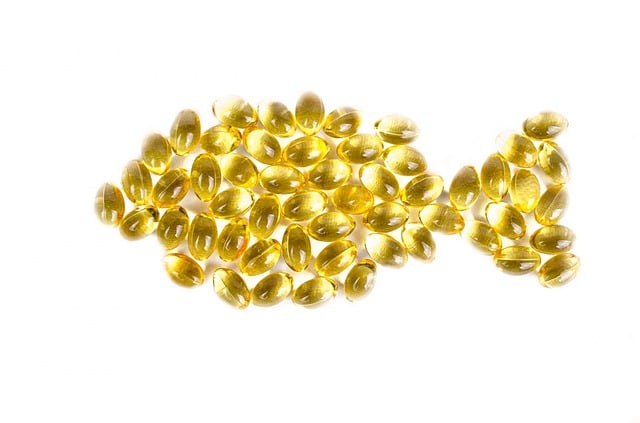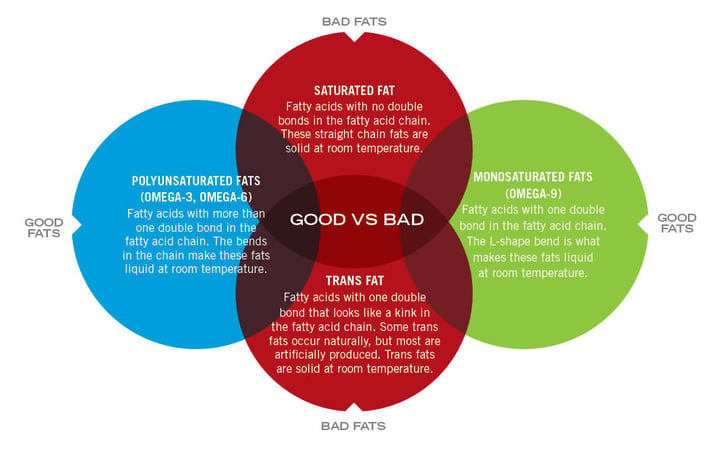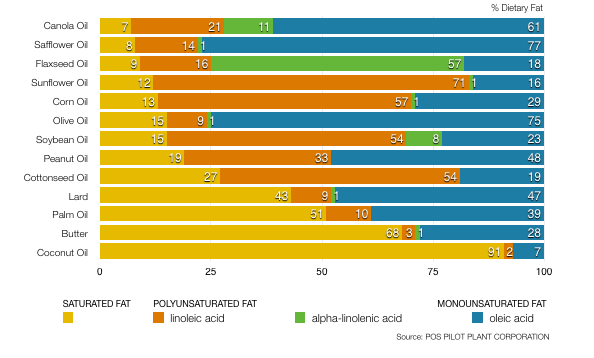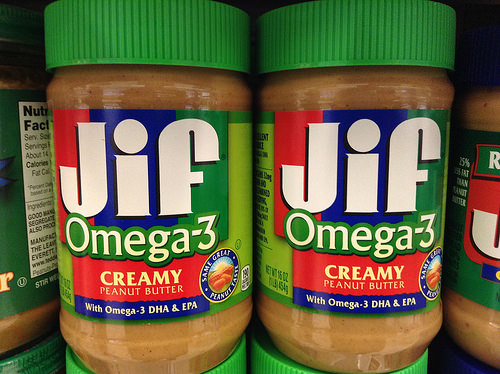
The term “omega” is usually thought of to be something healthy … a related to food and nutrition… and you should get more of them.
But do you really know what omega’s are? Most people don’t.
The more important question is why do your customers want to eat foods that contain omegas? Because healthy consumers everywhere are aware of the benefits and they are, in fact, looking for products that offer them. Understanding what each type of omega is, and why it’s healthy or unhealthy will give you some insight into your customers’ mindset.
Omega-3, Omega-6, and Omega-9 is another way of saying monounsaturated and polyunsaturated fats. If you’ve never heard of these terms before, we’ll first describe the different types of of fats that exist. This will help you better understand omega 3, 6 and 9, which are synonyms for these other terms.
Omega 3 & 6 = Polyunsaturated Fats
Omega 9 = Monounsaturated Fats
Types of Fats
There are a few different types of fat — monounsaturated, polyunsaturated and saturated and trans, listed from healthiest to least healthy.

Monounsaturated and polyunsaturated fats are healthy types of fat that are commonly found in liquid oils. These good fats can have health benefits, including:
- Prevent coronary heart disease
- Prevent stroke
- Prevent diabetes
- Promote healthy nerve activity
- Improve vitamin absorption
- Maintain a healthy immune system
- Promote cell development
For example, both olive oil, canola oil and sunflower oil are made up of different percentages of primarily mono and polyunsaturated fats.
On the other hand, saturated fats and trans fats are considered to be unhealthier. But with today’s interest in organic coconut oil, saturated fat is still a highly debated topic.
With trans fats, however, people have reached a consensus — these artificial fats found primarily in partially hydrogenated oils (PHOs) are not healthy, and should be avoided as much as possible. In fact, the FDA recently released a statement requiring that all food manufacturers swap out any PHOs they may be using to other healthier options within the next 3 years.
Use this chart to compare the average make ups of different oils between monounsaturated, polyunsaturated and saturated fats.

Now that you understand the different types of fats that exist, we’ll throw omegas into the mix.
Omega-3 Fatty Acids
Omega-3 fatty acids are a type of polyunsaturated fat considered essential for human health because the body cannot manufacture these types of acids. People must obtain omega-3 fatty acids from foods such as fish-, nut- and plant-based oils, including canola oil and sunflower oils.

There are a few different types of Omega-3 acids, including ALA, EPA and DHA, each differentiated from the other by the types of chemical bonds that they are.
Eating foods rich in omega-3 fatty acids can help lower the risk of chronic diseases such as heart disease, stroke and cancer, as well as lower LDL or “bad” cholesterol. A diet high in ALA helps reduce the risk of heart disease and stroke by lowering cholesterol and triglyceride levels, enhancing the elasticity of blood vessels, and preventing the build-up of harmful fat deposits in the arteries. Diets high in EPA and DHA help with brain and eye development, prevent cardiovascular disease, and can help to prevent Alzheimer’s disease.
Omega-6 Fatty Acids
Omega-6 fatty acids are also polyunsaturated fats, essential for human health because the body cannot manufacture them. People must obtain omega-6 fatty acids by consuming foods such as meat, poultry and eggs, as well as nut- and plant-based oils, including canola, corn, soybean, and sunflower oils.
While they are considered essential, these omegas must be limited. Excessive amounts of Omega-6 (linoleic acid, specifically) can contribute to inflammation and result in heart disease, cancer, asthma, arthritis and depression, so Omega-6, while important, must be restricted.
There are a few different types of Omega-6 acids, including LA (linoleic acid), GLA (gamma-linolenic) and AA (arachidonic acid).
LA is found in canola, corn, peanut, safflower, soybean and sunflower oils. AA is found in red meat, poultry and eggs. GLA is found in infrequently consumed vegetable oils, such as evening primrose oil; mostly delivered in nutritional supplements. Most omega-6 fatty acids are consumed in the diet from vegetable oils, such as linoleic acid.
Omega-9 Fatty Acids
Omega-9 is synonymous with monounsaturated fat. Omega-9 fatty acids are from a family of unsaturated fats commonly found in vegetable oils. Unlike omega-3 and omega-6 fatty acids, the body can produce omega-9 fatty acids, but they are beneficial when obtained in food.
The primary omega-9 fatty acid is oleic acid. Oleic acid is commonly found in canola, olive and sunflower oils. Oleic acid also is commonly found in other oils, fruits, and nuts:
- Oils: canola, olive, peanut, safflower and sunflower
- Fruits: avocados and olives
- Nuts: almonds, cashews, macadamias, peanuts, pecans, pistachios and walnuts
Omega-9 fatty acids, commonly referred to as monounsaturated fatty acids, offer important health benefits. Research has shown that omega-9 fatty acids are protective against metabolic syndrome and cardiovascular disease risk factors. Because omega-9 fatty acids have been shown to increase HDL (good) cholesterol and decrease LDL (bad) cholesterol, they help eliminate plaque buildup in the arteries, which may cause heart attack or stroke.
In Conclusion
Although omega-3, omega-6 and omega-9 fatty acids all serve different functions within the body, the evidence is clear that incorporating balanced proportions of both essential and non-essential fatty acids are necessary for maintaining overall heart health and general wellness.
In general, however, most of your calories from fat should come from monounsaturated fats, and you should avoid saturated and trans fats as much as possible.
Topics: Comparing Oils, Olive Oil












